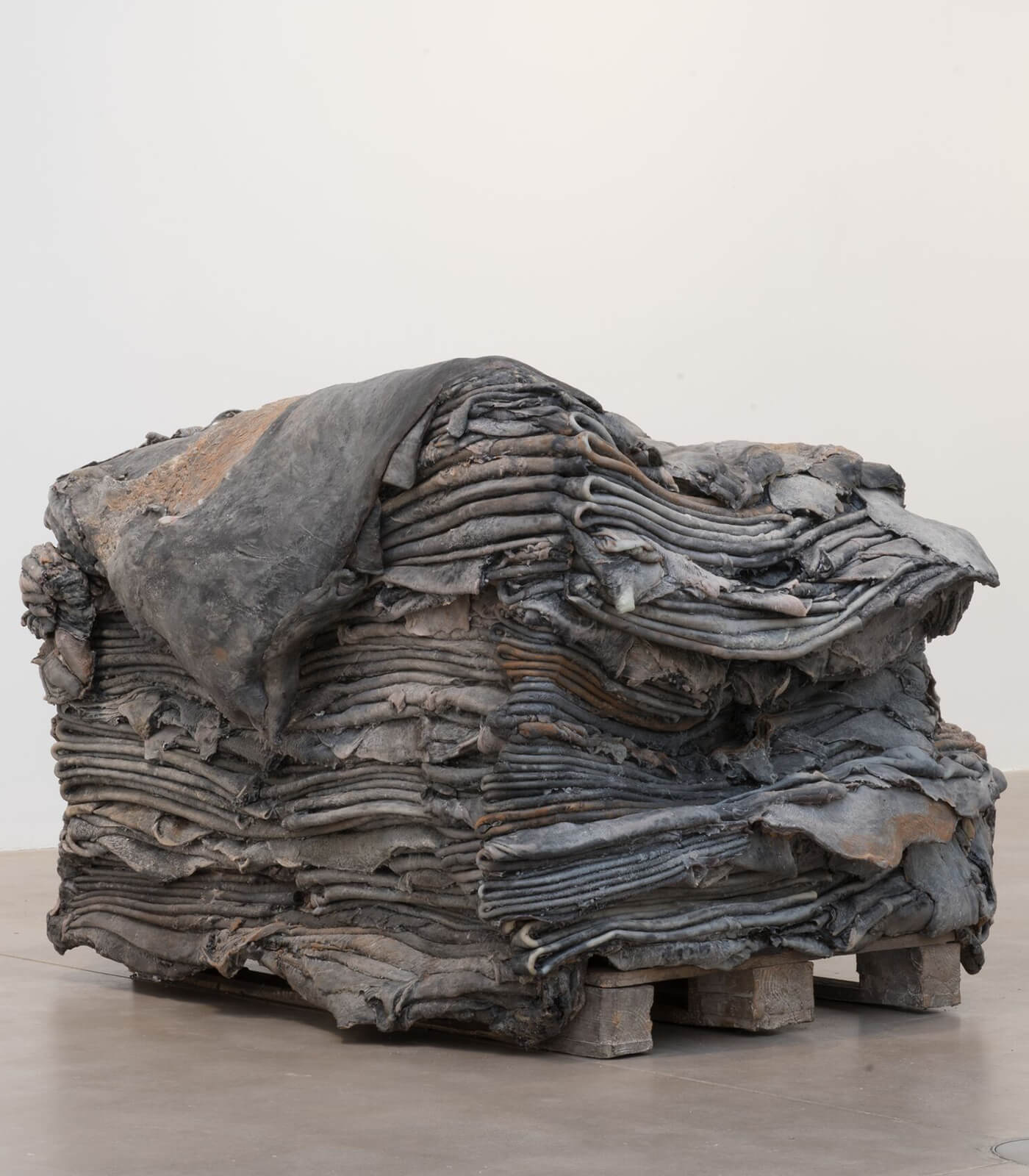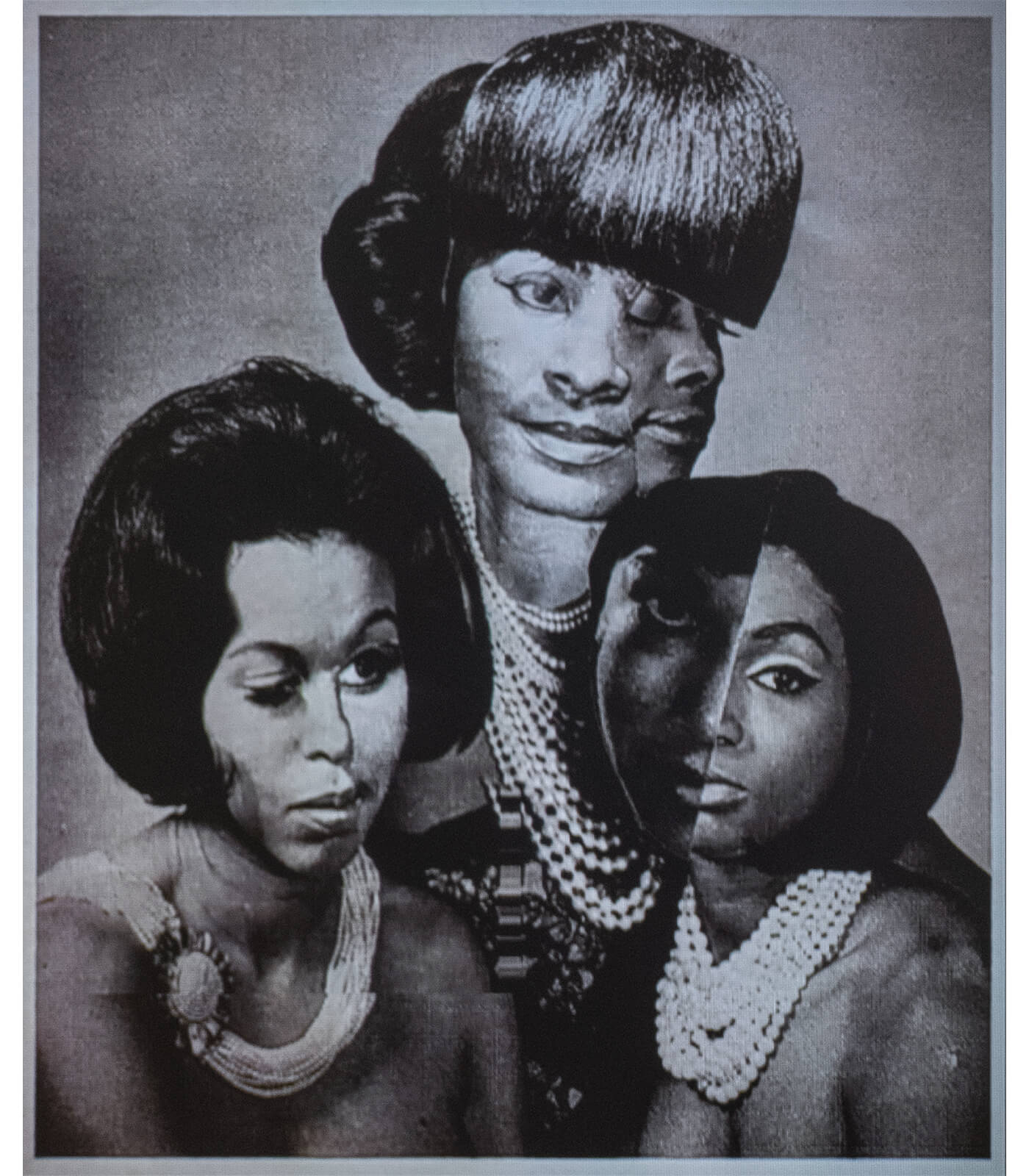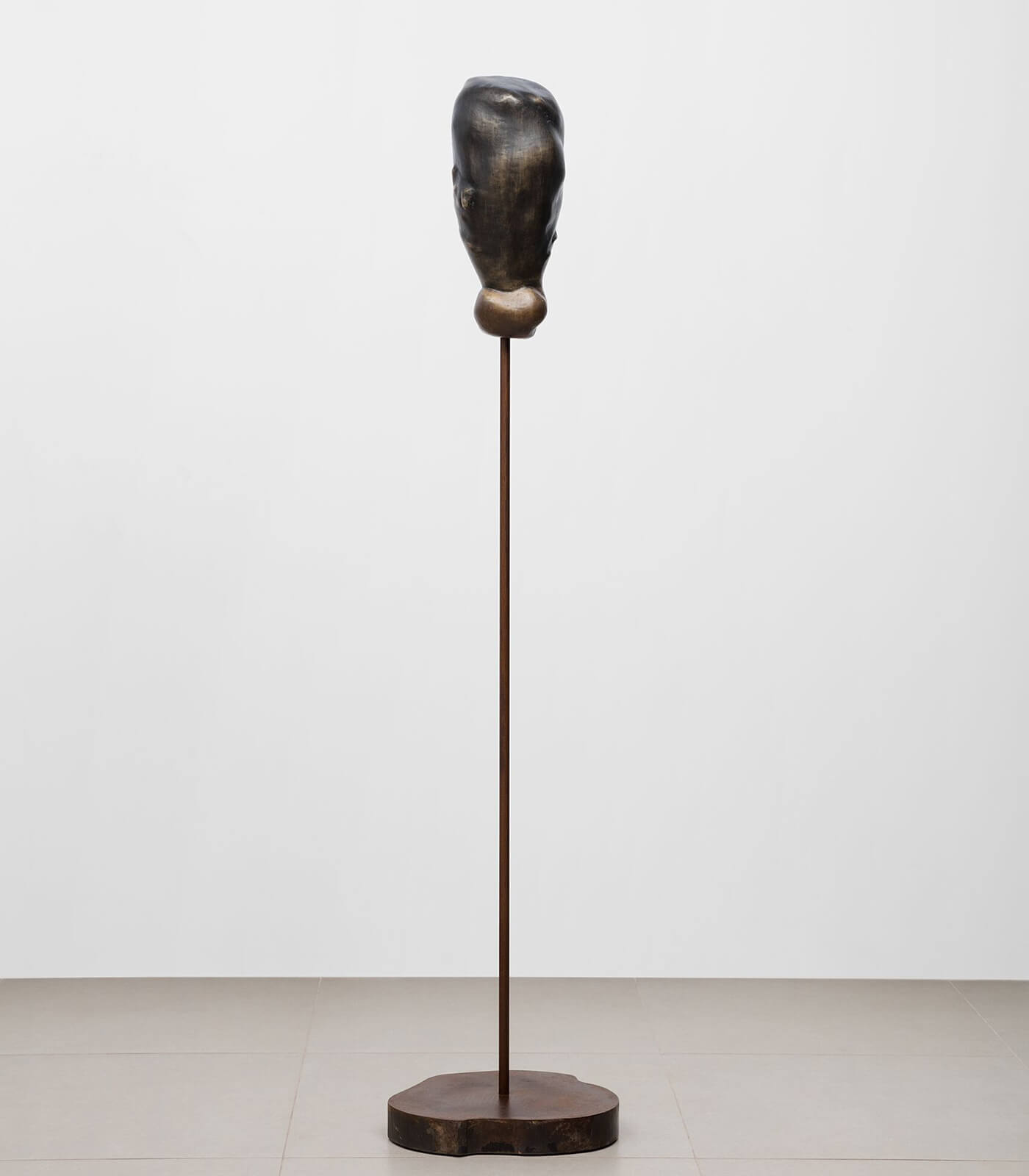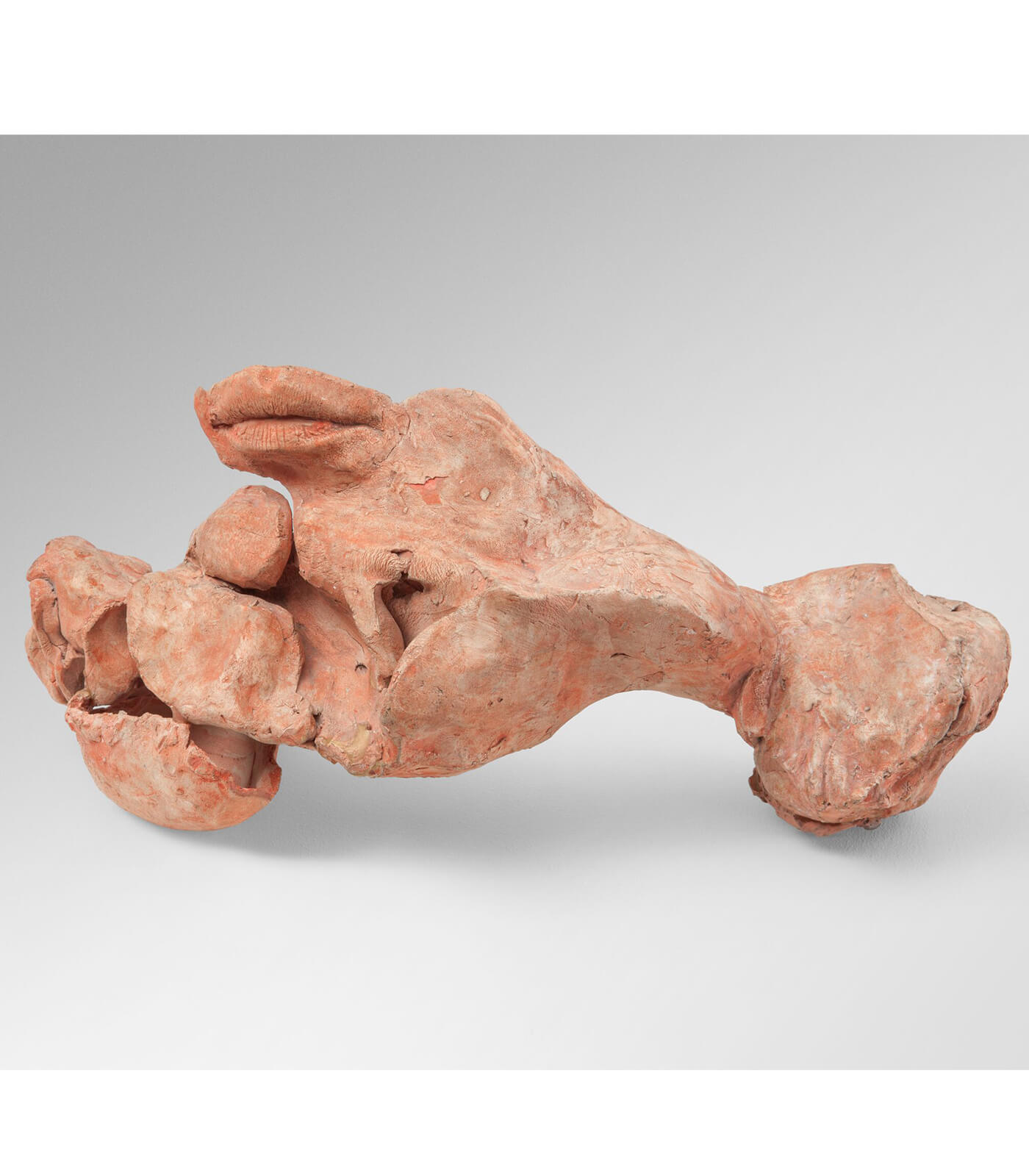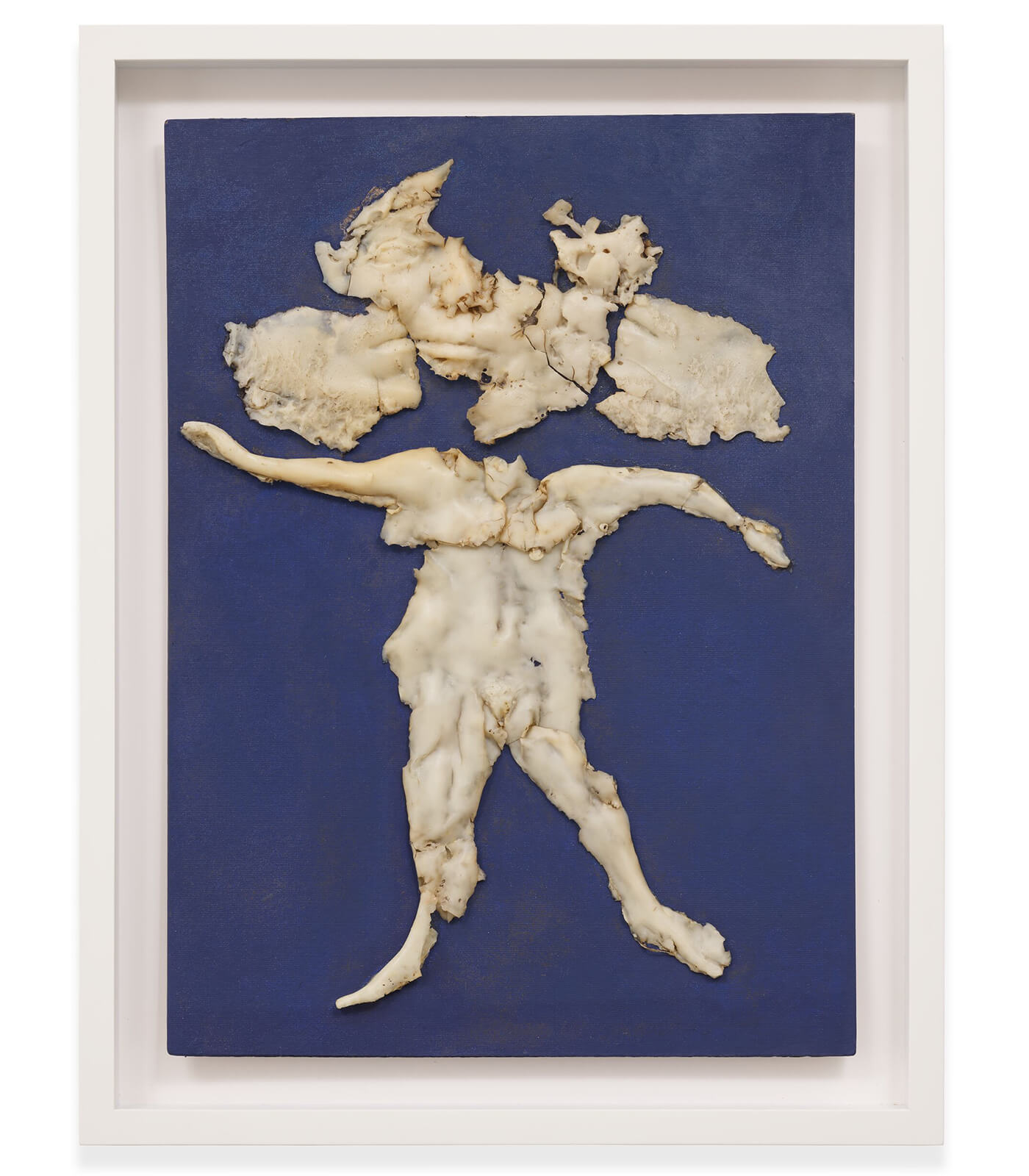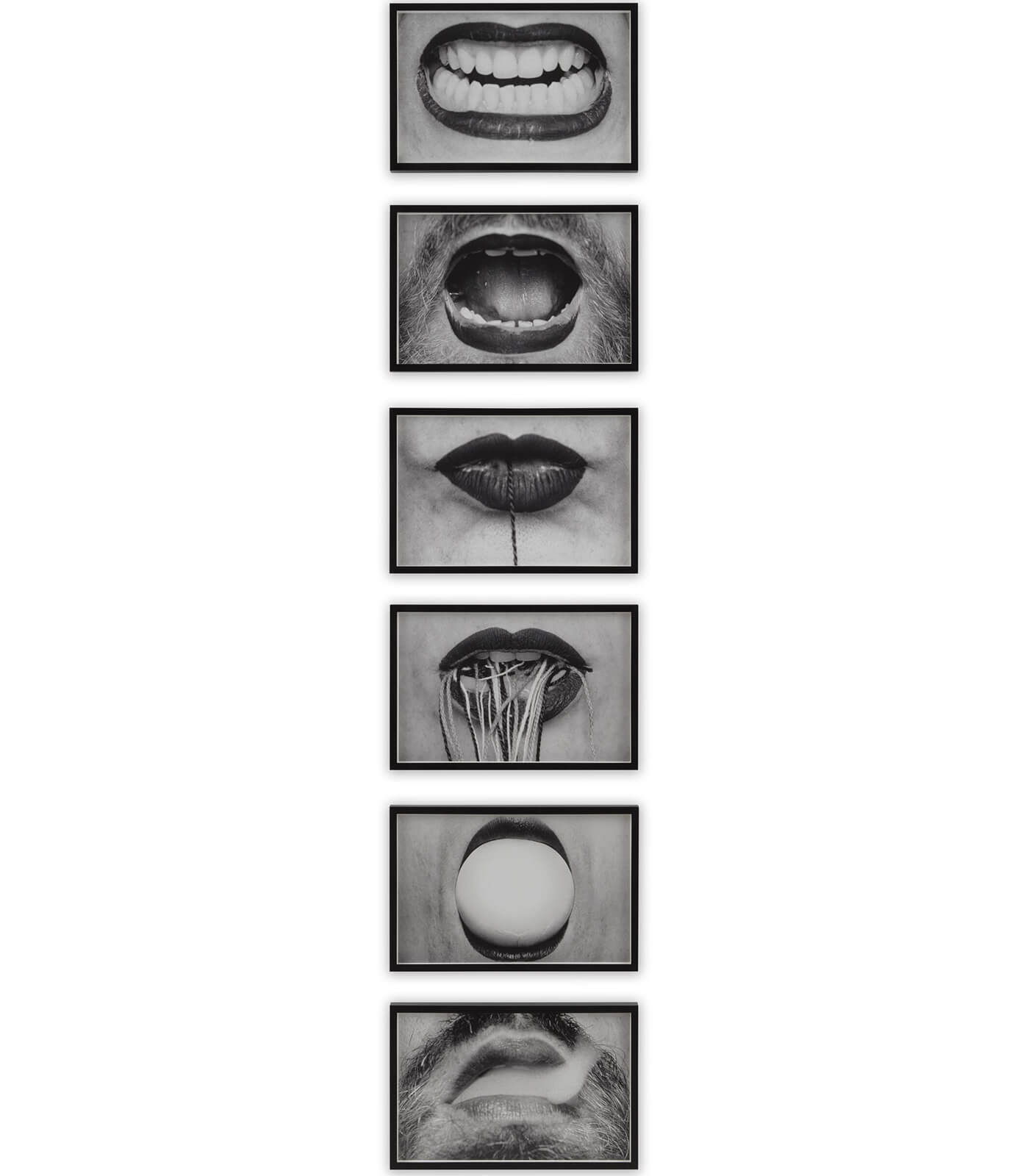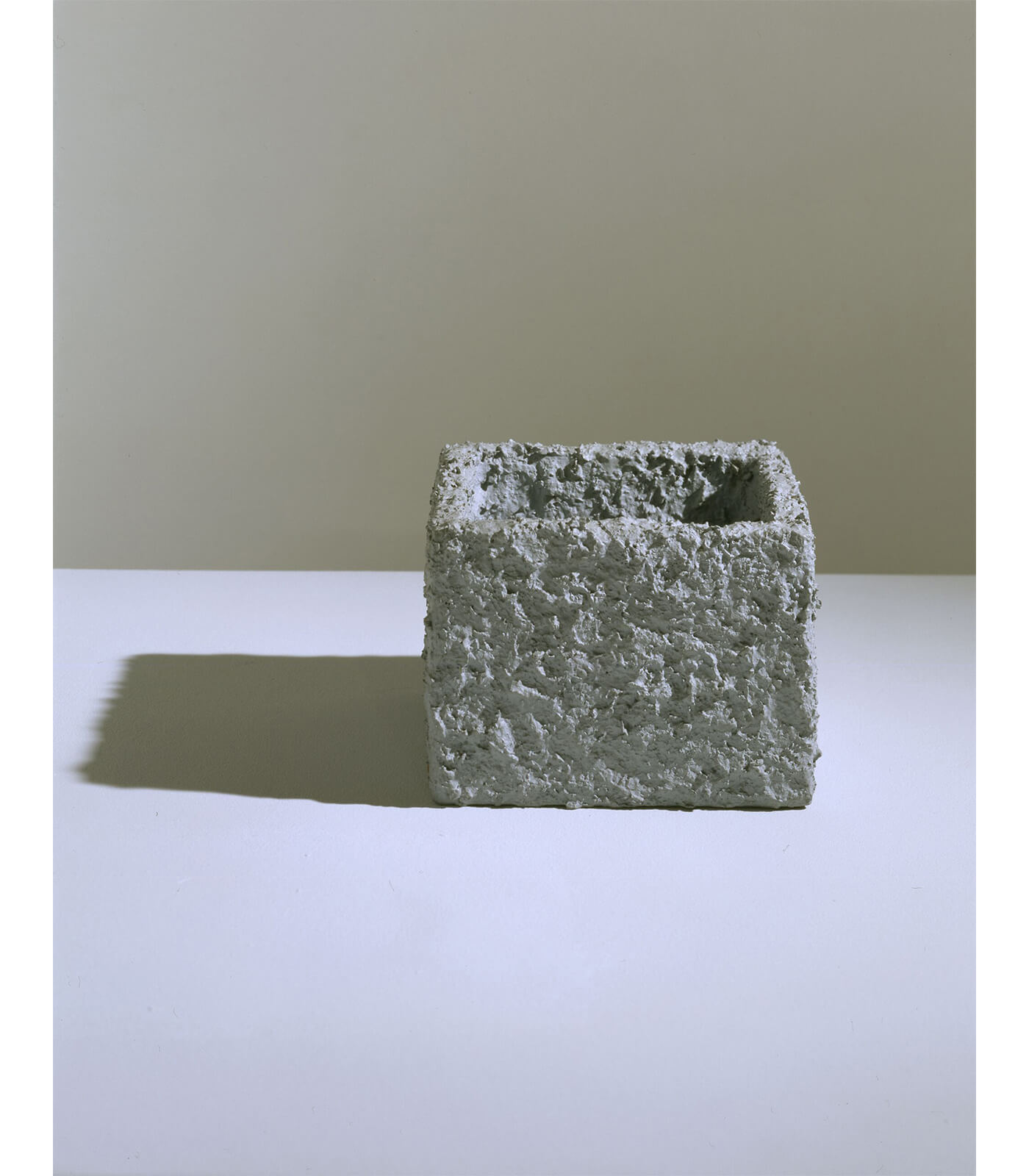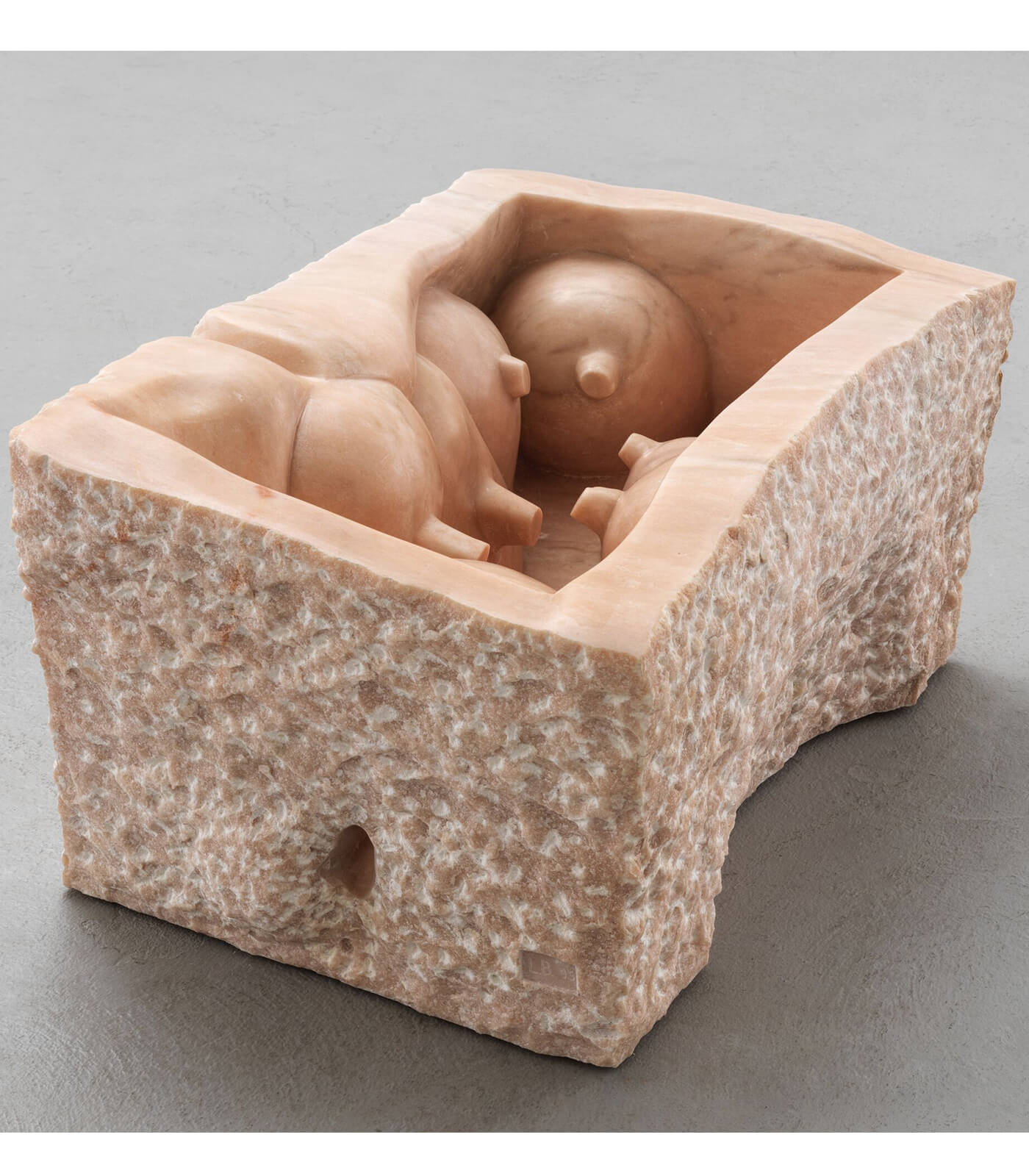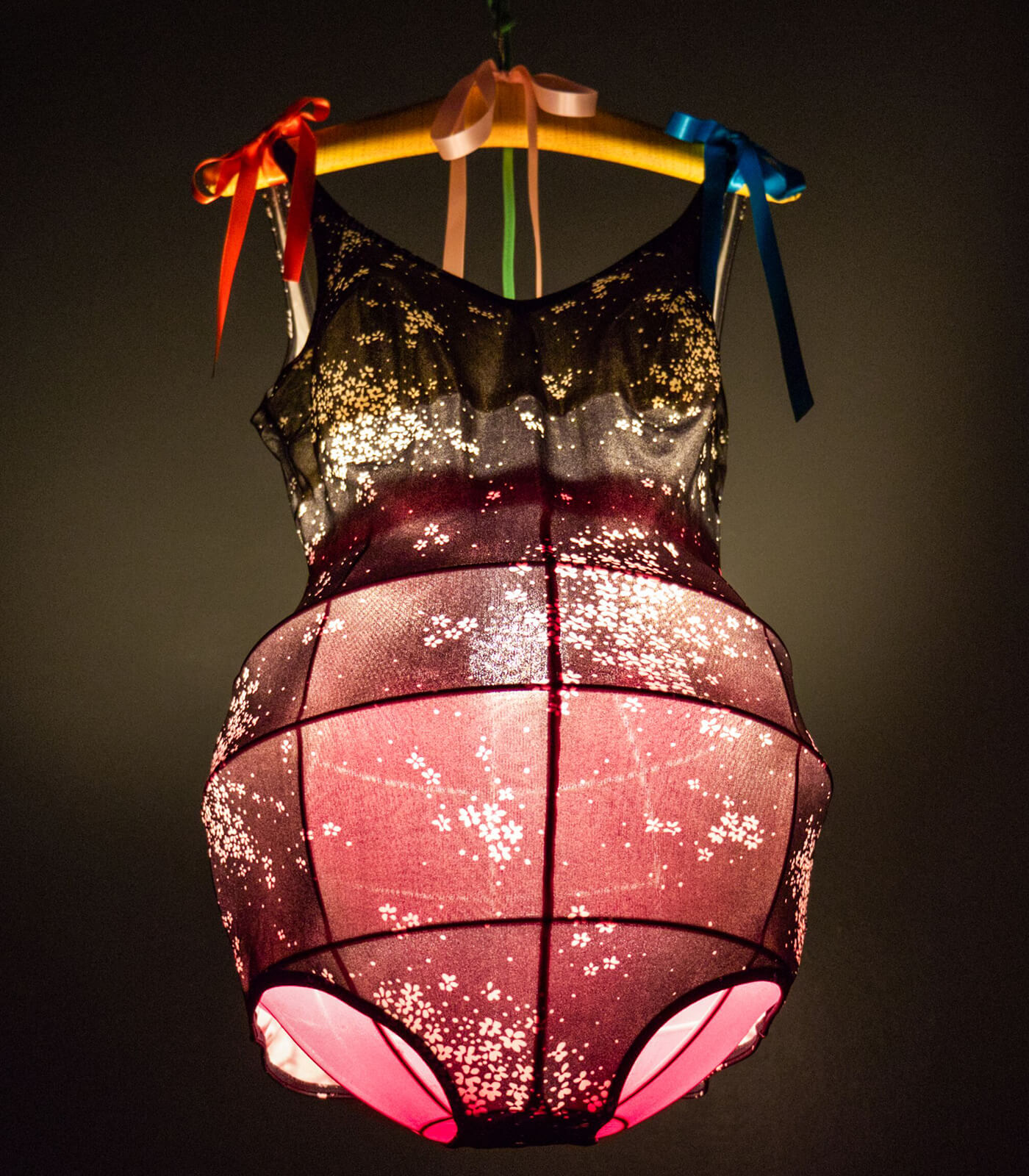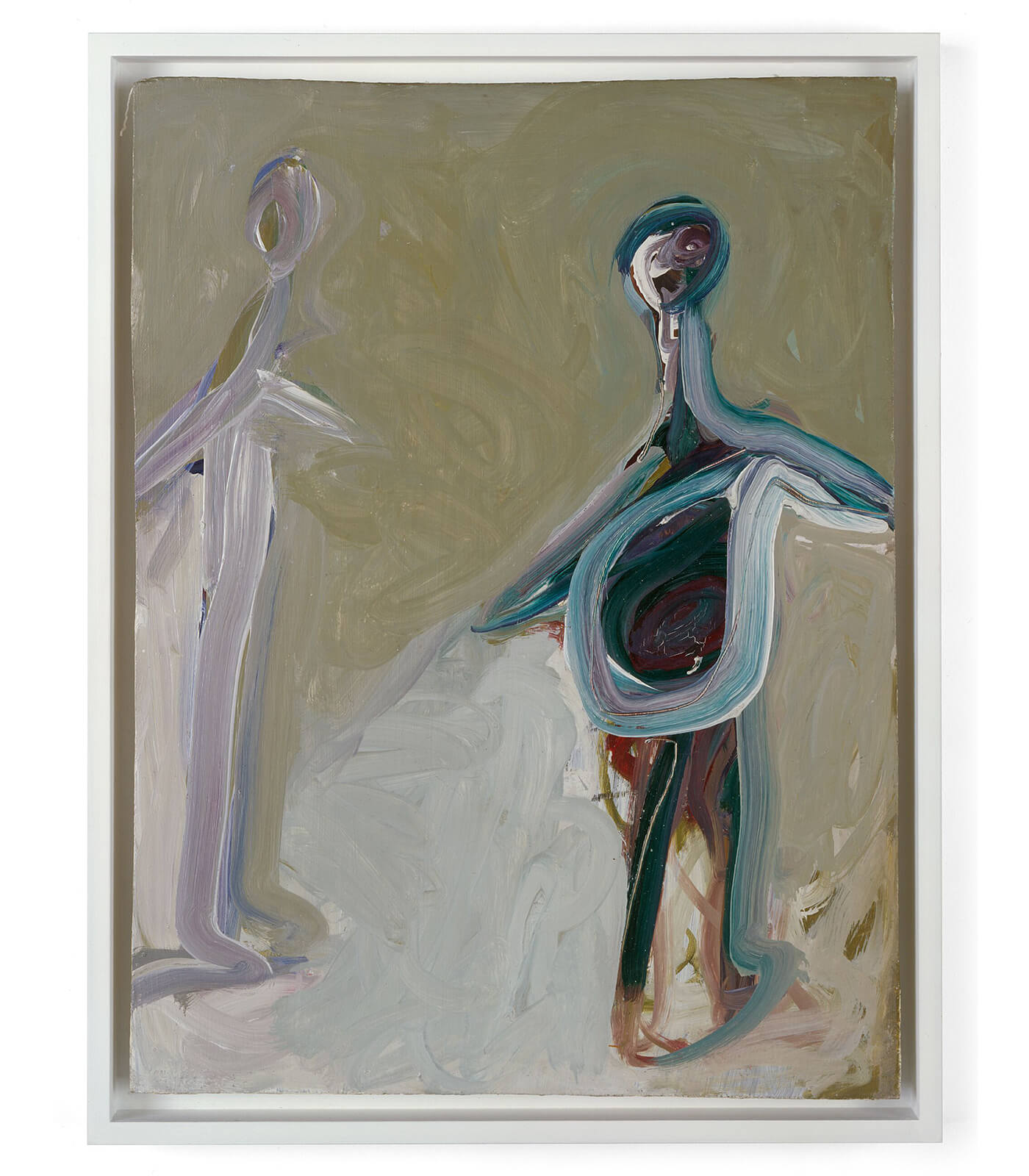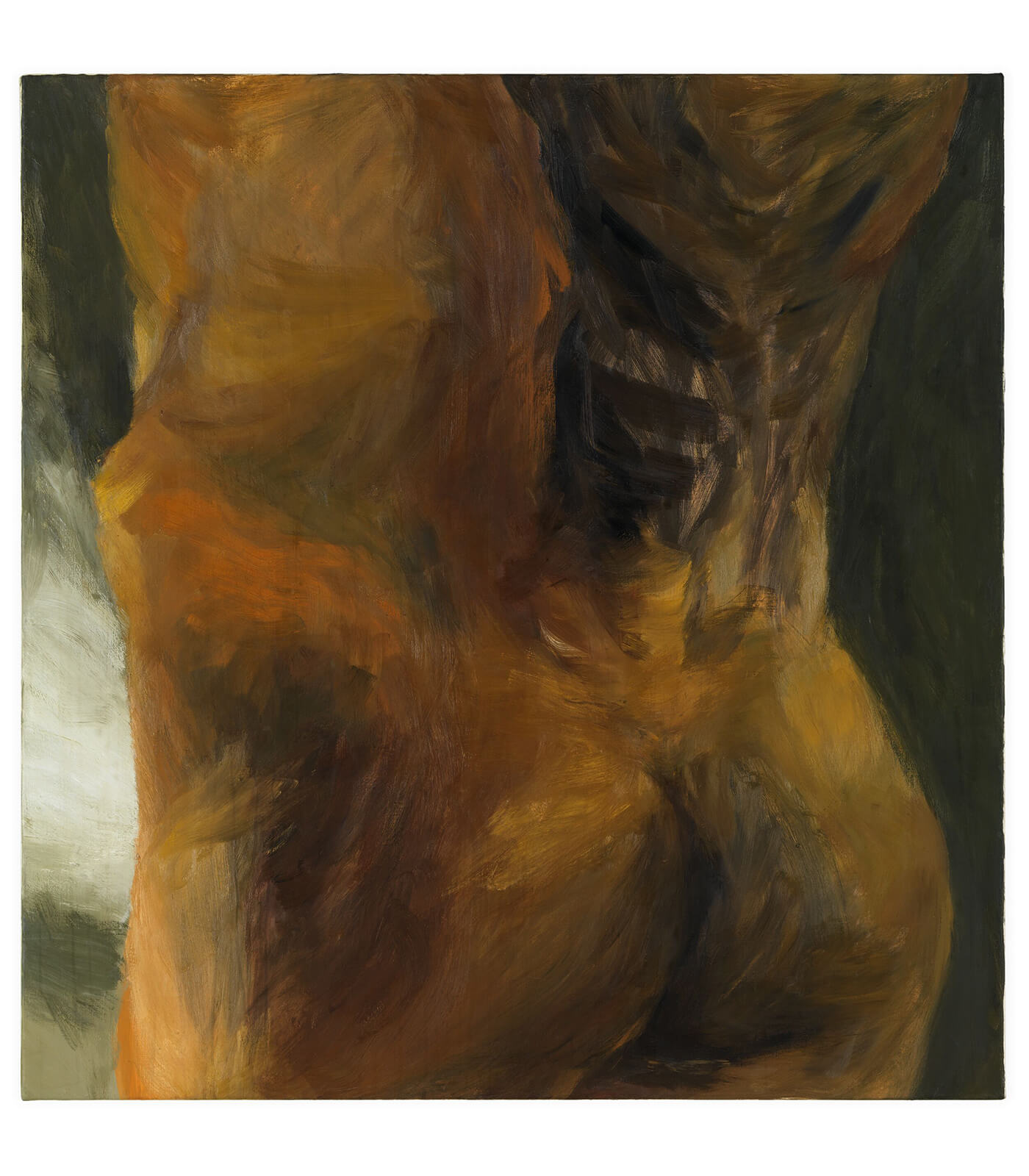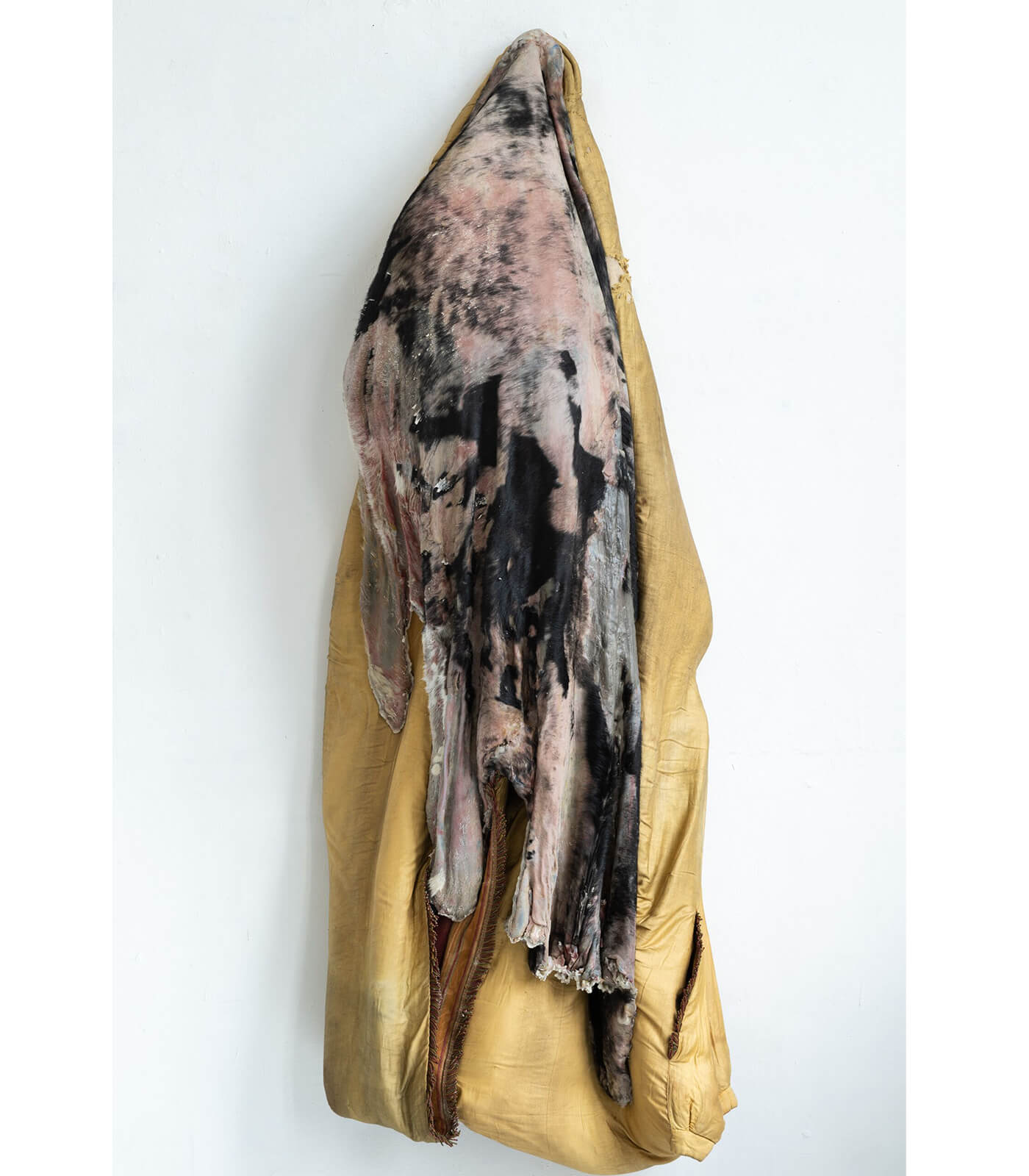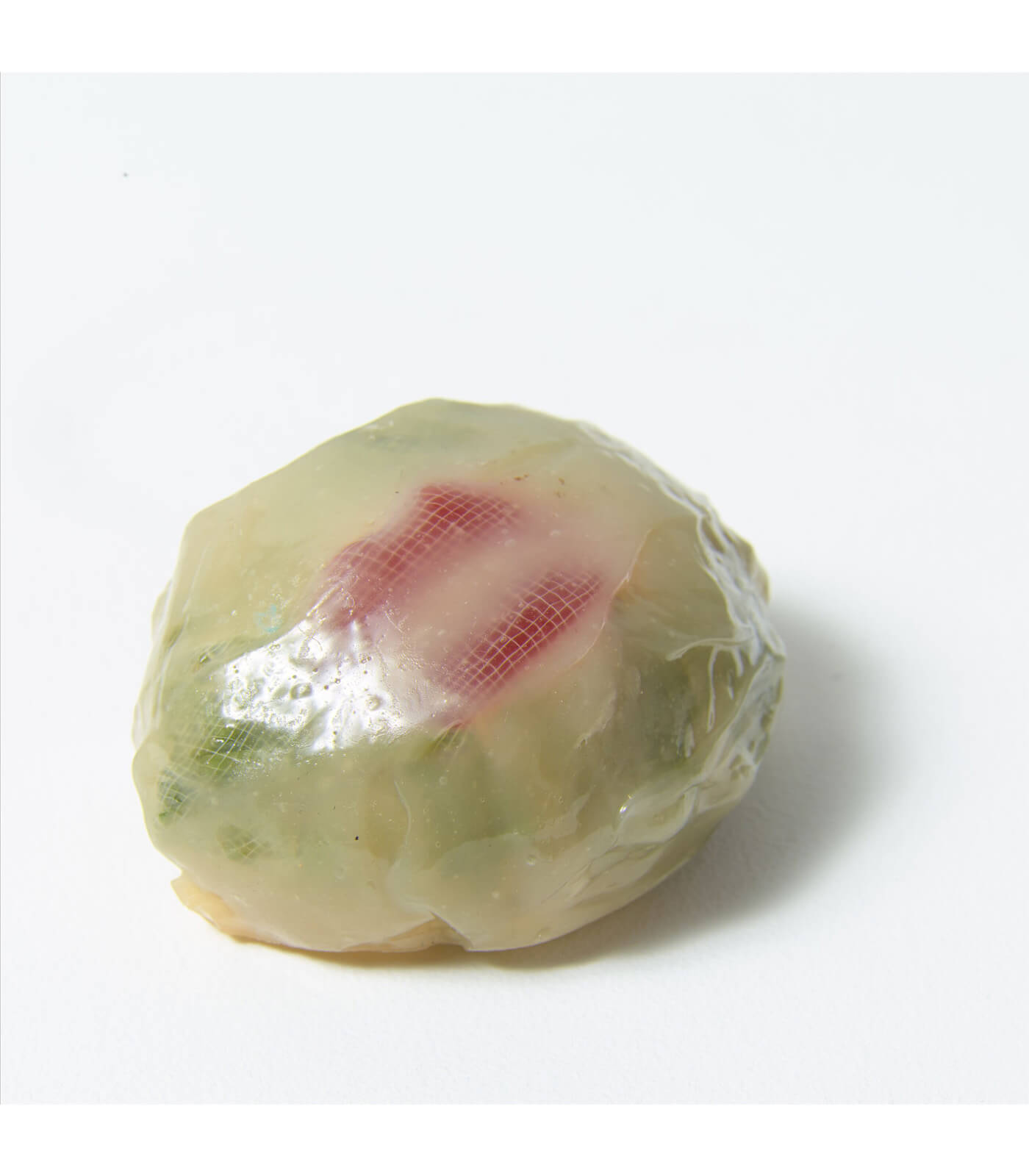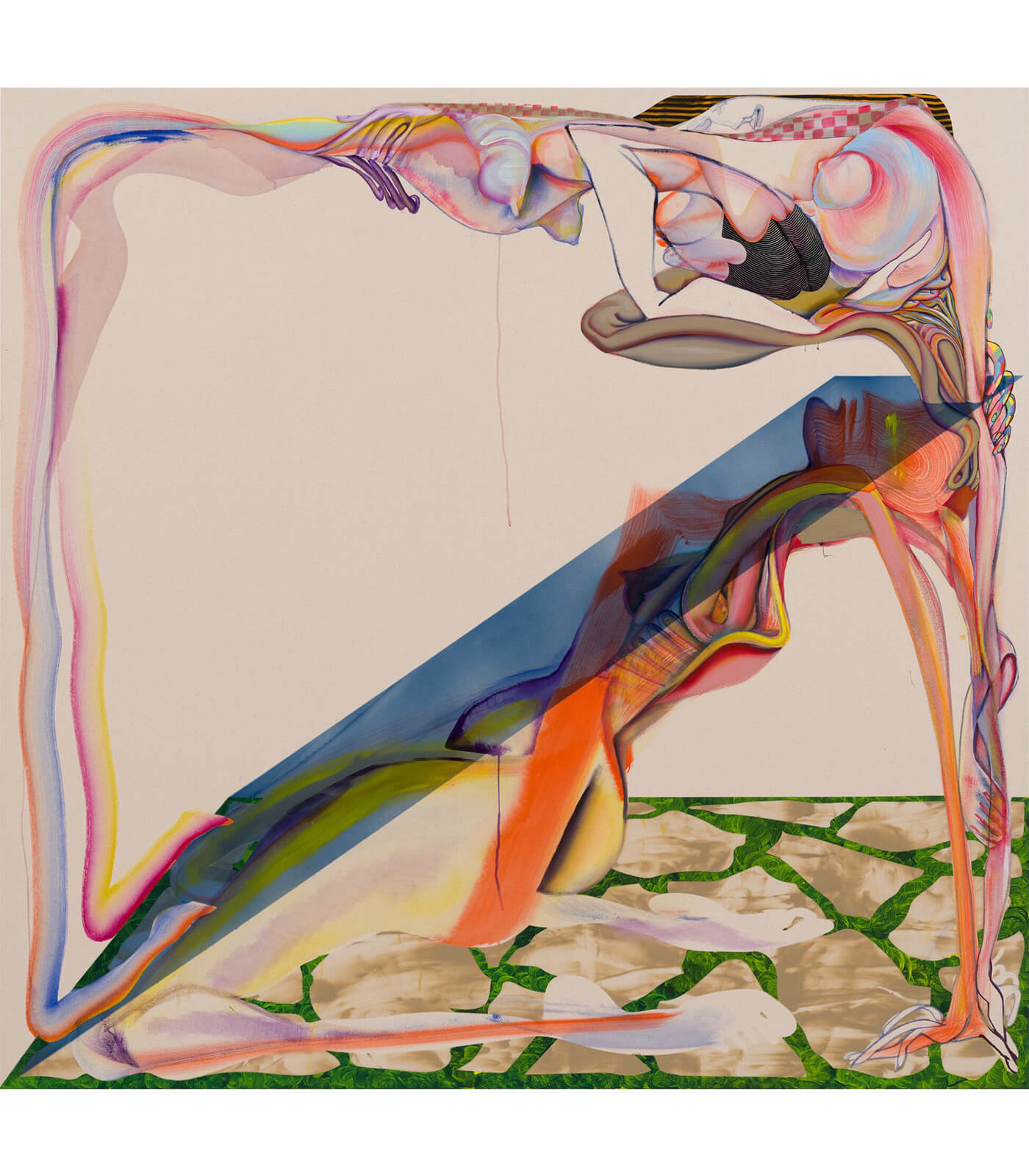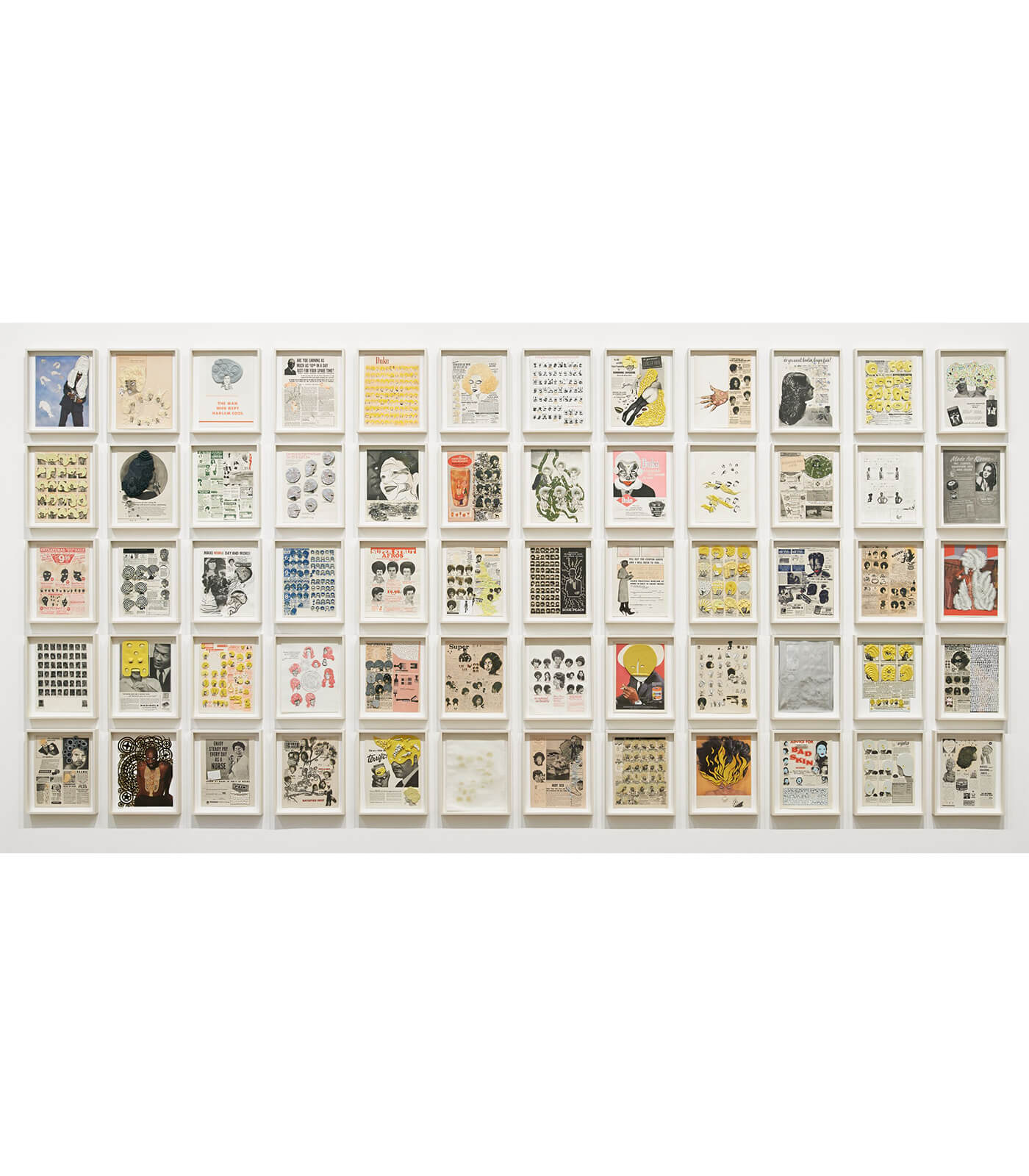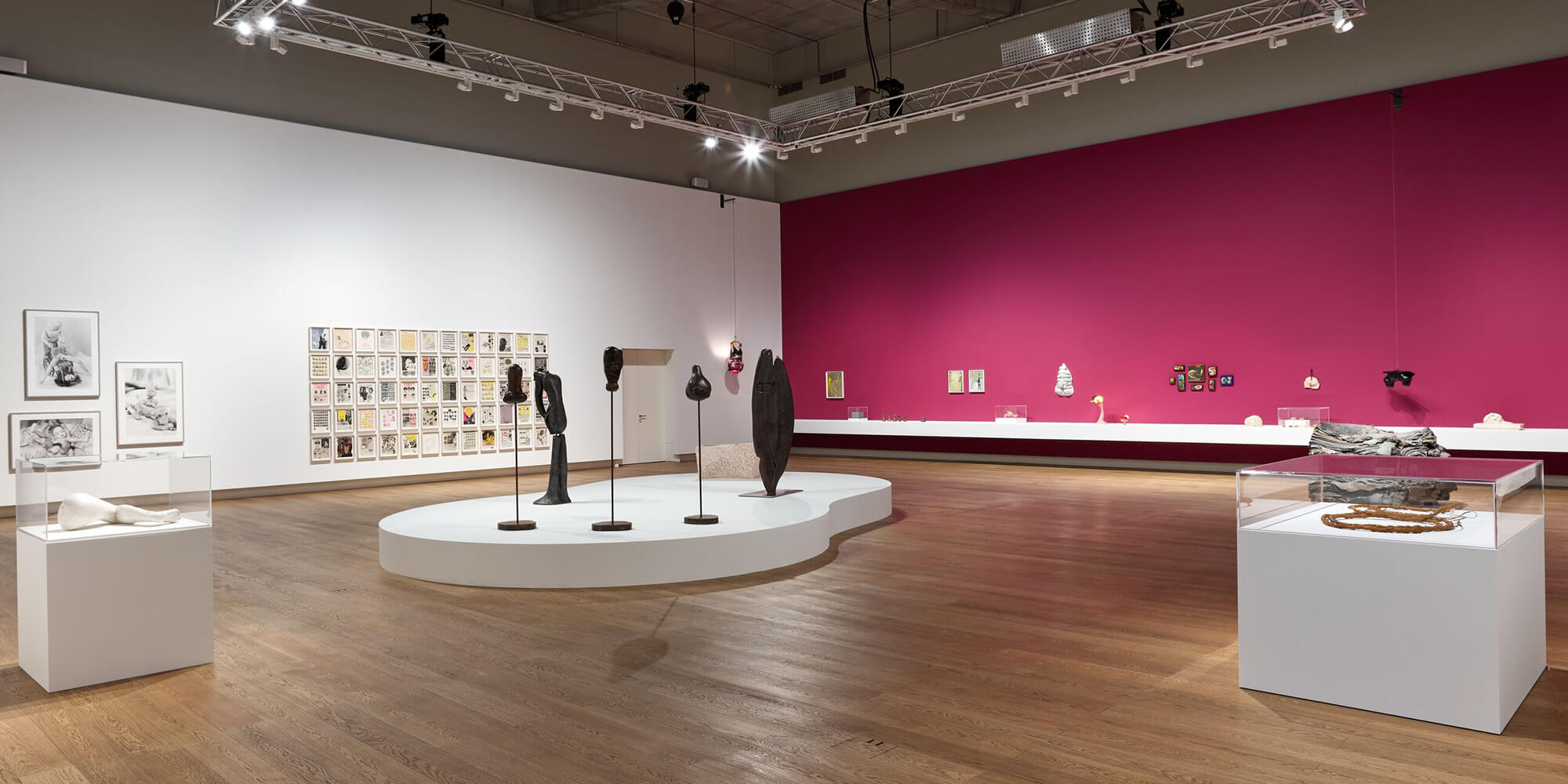
Bodily Abstractions / Fragmented Anatomies
26 January – 30 April 2022
Monaco
Bodily Abstractions / Fragmented Anatomies simultaneously addresses new concepts of previously gender-defined strength, sexuality, fragility or illness, love, violence, tenderness, and human relations.
Explore the exhibition
This exhibition focuses on artists whose work approaches the body and anatomy in complex ways through degrees of abstraction or fragmentation. In doing so, these artists subvert both the way the body has been traditionally represented in the history of art and the conventions surrounding the (classical or modern) fragment. While it highlights the work of women artists, it also includes work which challenges gender stereotyping and binary or cis-gender categories in favour of gender fluidity, often expressed through a fluidity of bodily form.
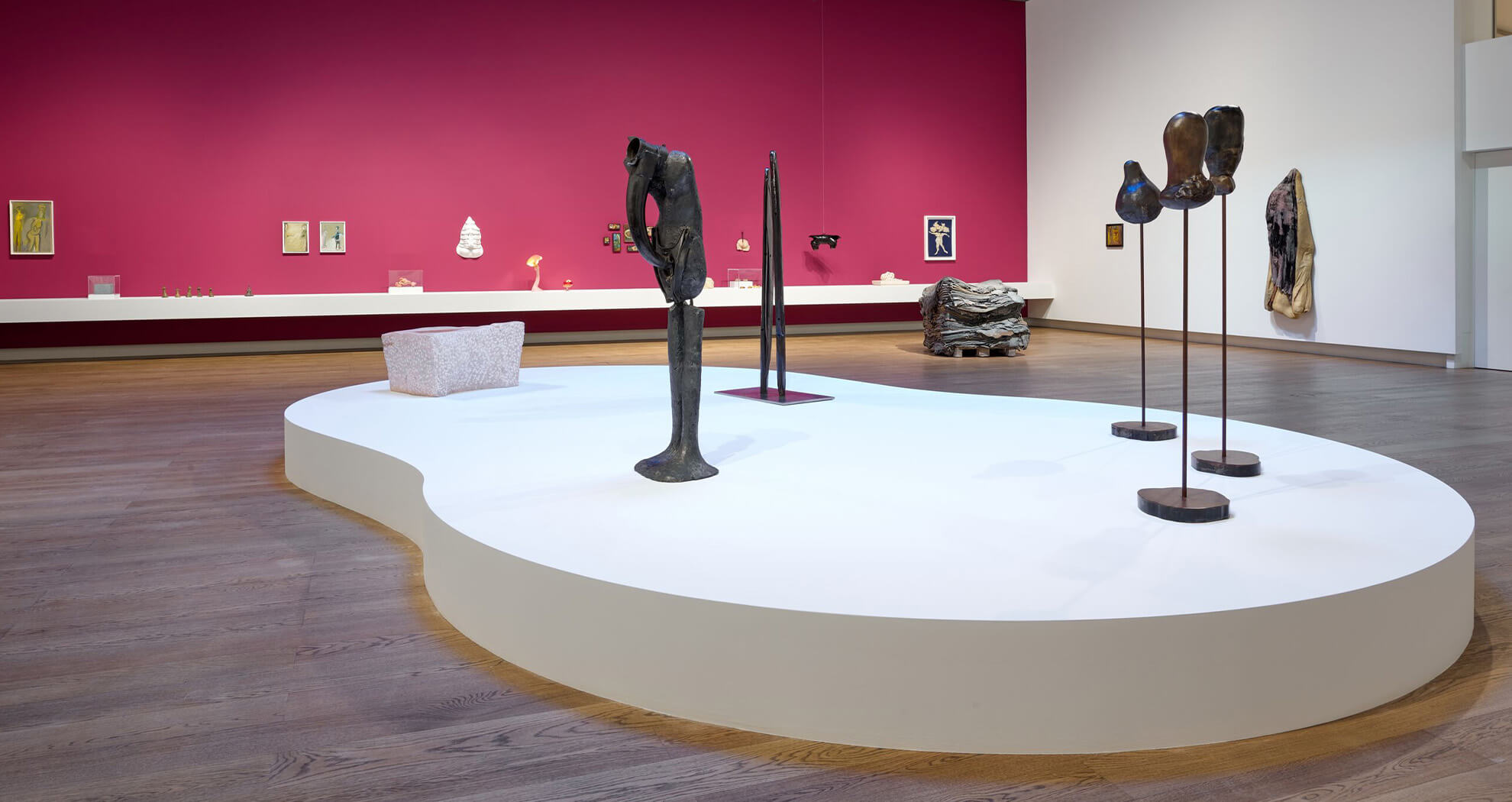
Taking its inspiration in part from Linda Nochlin’s essay ‘The Body in Pieces: The Fragment as a Metaphor of Modernity’ (1994), this exhibition will review these ideas through the work of some of the twentieth and twenty- first century’s masters:
Louise Bourgeois, Berlinde de Bruyckere, Ellen Gallagher, Eva Hesse, Maria Lassnig, Lee Lozano, Anna Maria Maiolino, Christina Quarles, Cindy Sherman, Lorna Simpson, Pipilotti Rist and Alina Szapocznikow. As Nochlin wrote in relation to the work of Louise Bourgeois and Cindy Sherman, among others, ‘the postmodern body, from the vantage-point of these artists and many others, is conceived of uniquely as the ‘body-in-pieces’: the very notion of a unified, unambiguously gendered subject is rendered suspect in their work’.
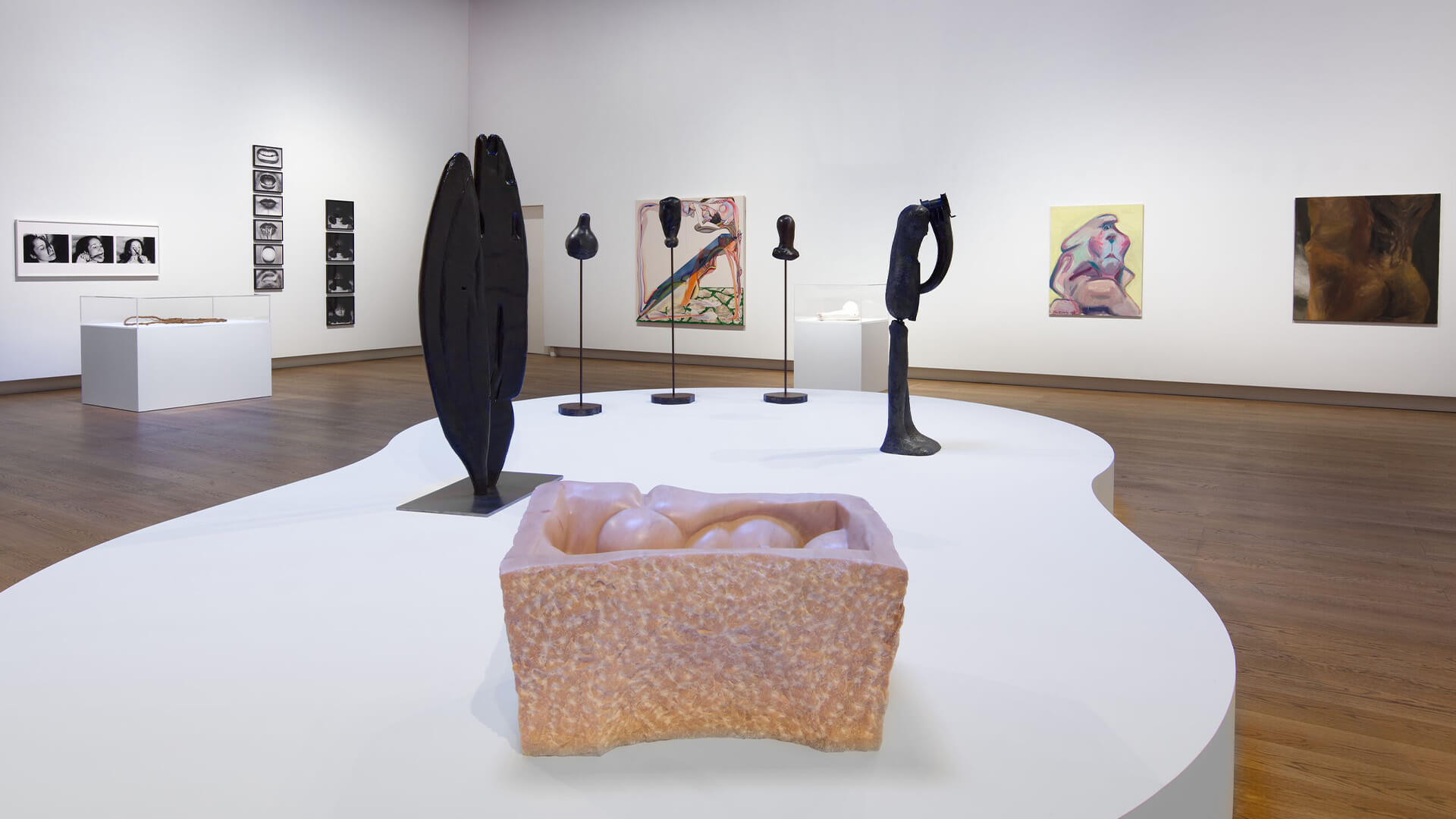
A sculpture by Louise Bourgeois, ‘Nature Study #6’ (1995), belongs to a series of bodily fragments rendered in marble. In the work, numerous smoothly carved breasts, which emphasise the maternal body with its capacity to nurture and regenerate, are contained within a roughly hewn trough or sarcophagus.
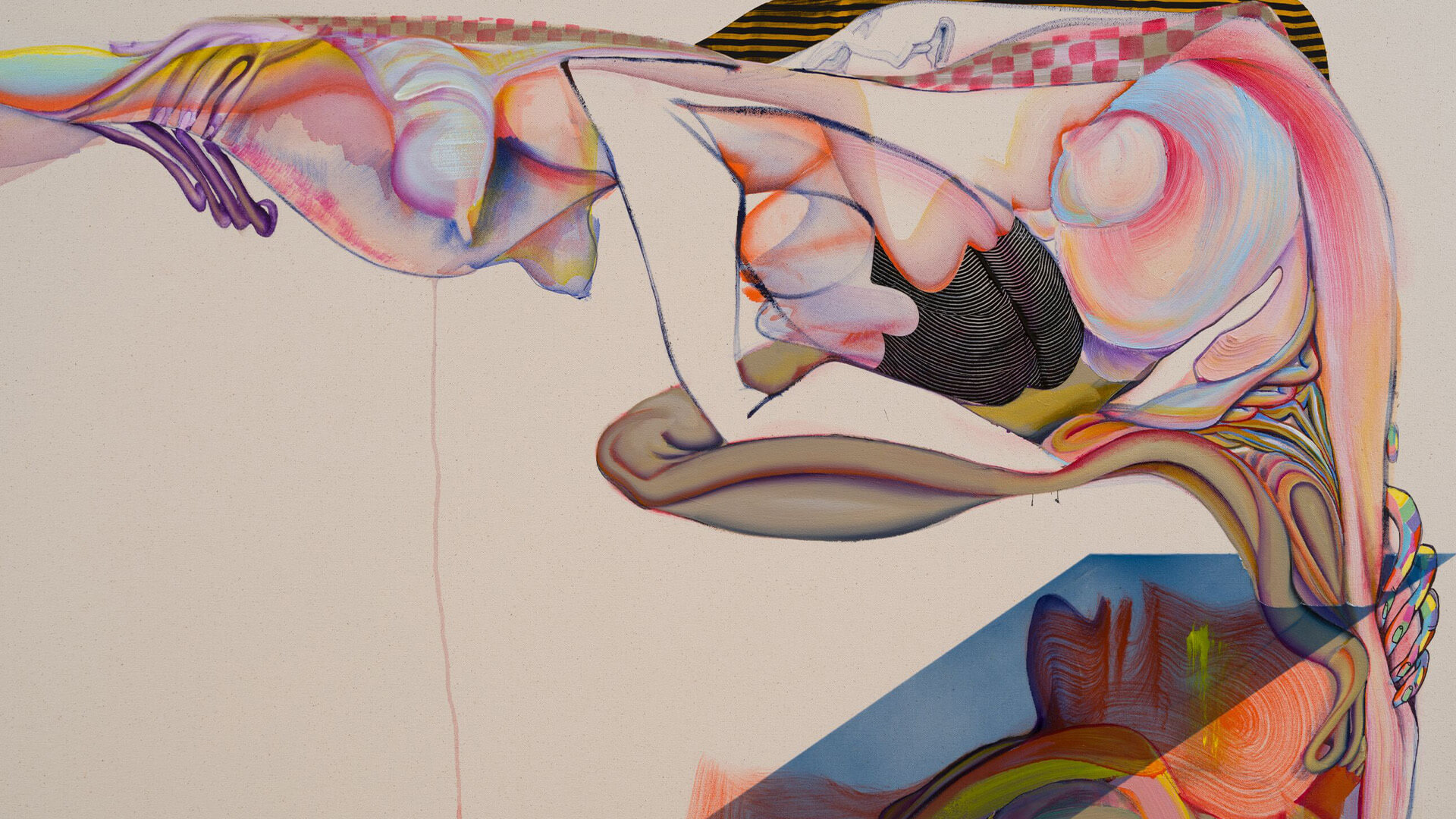
‘A Lull Gone By’ (2021) by Christina Quarles is a deliberately enigmatic, vivid painting teeming with breasts, limbs, torsos, and faces reconfigured into flowing and gender-ambiguous forms. In her work, Quarles explores the different ways in which race, gender, and sexuality contribute to the mingling and questioning of identity. Quarles’ work is juxtaposed with that of the late Austrian master Maria Lassnig, whose painting ‘Selbstportrait als Einäugige (Self Portrait as One Eyed)’ (1997) is included in the exhibition. Lassnig’s theory of ‘body awareness’ shaped a Surrealist-influenced method of communicating her mental perception of herself and her feelings through lacerating depictions of her own naked figure.
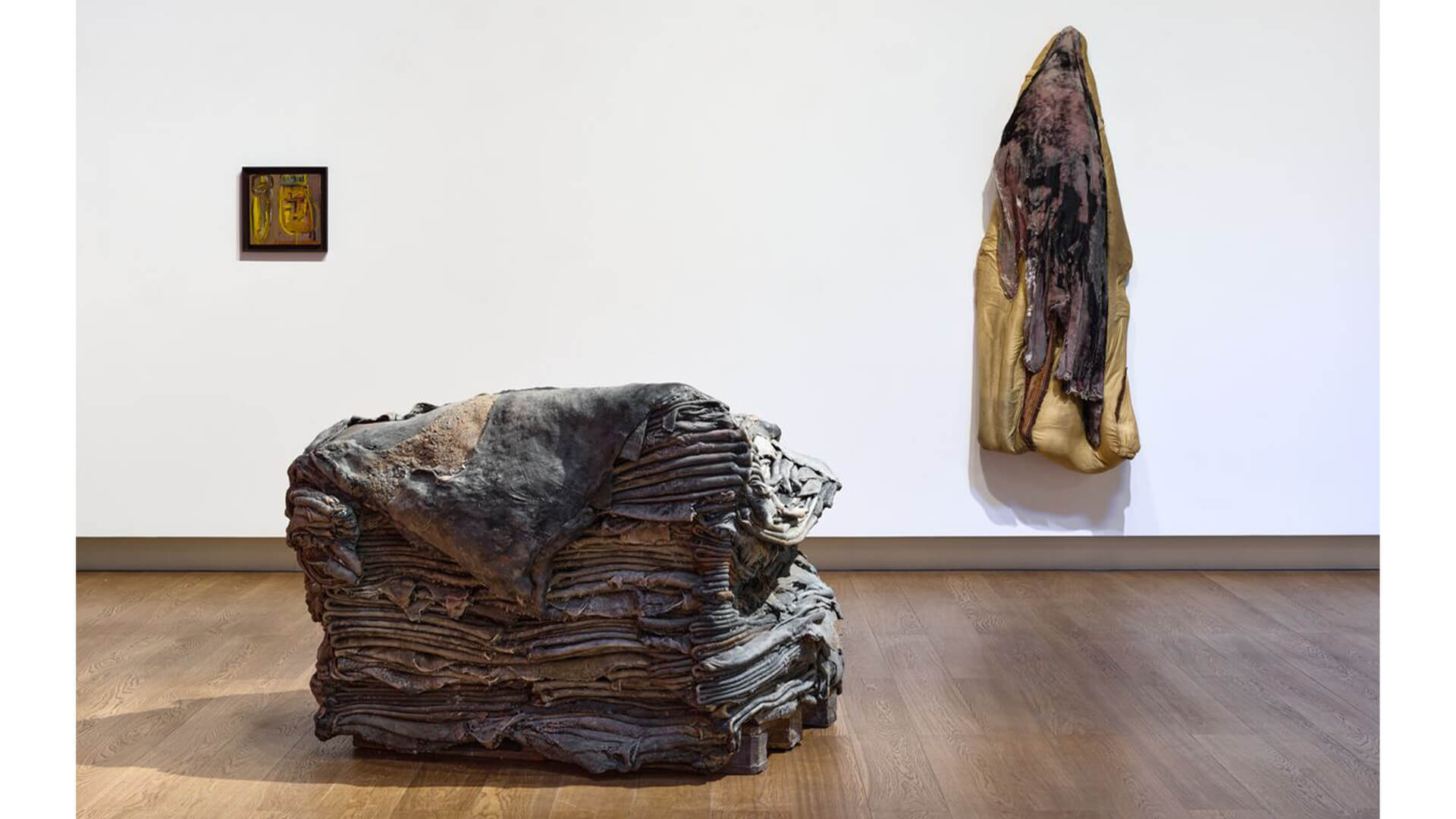
‘Bodily Abstractions / Fragmented Anatomies’ explores a variety of aesthetic approaches and techniques such as abstracting, fragmenting, cropping, juxtaposition, mutation and mutilation. The works subvert the fetishization of the female or traditionally gendered body, or its reduction to sexualized parts and surface appearances, and replace it with works that address female-centred or non-binary experience, the outward manifestation of interior feeling, profound psychological states, and intellect.
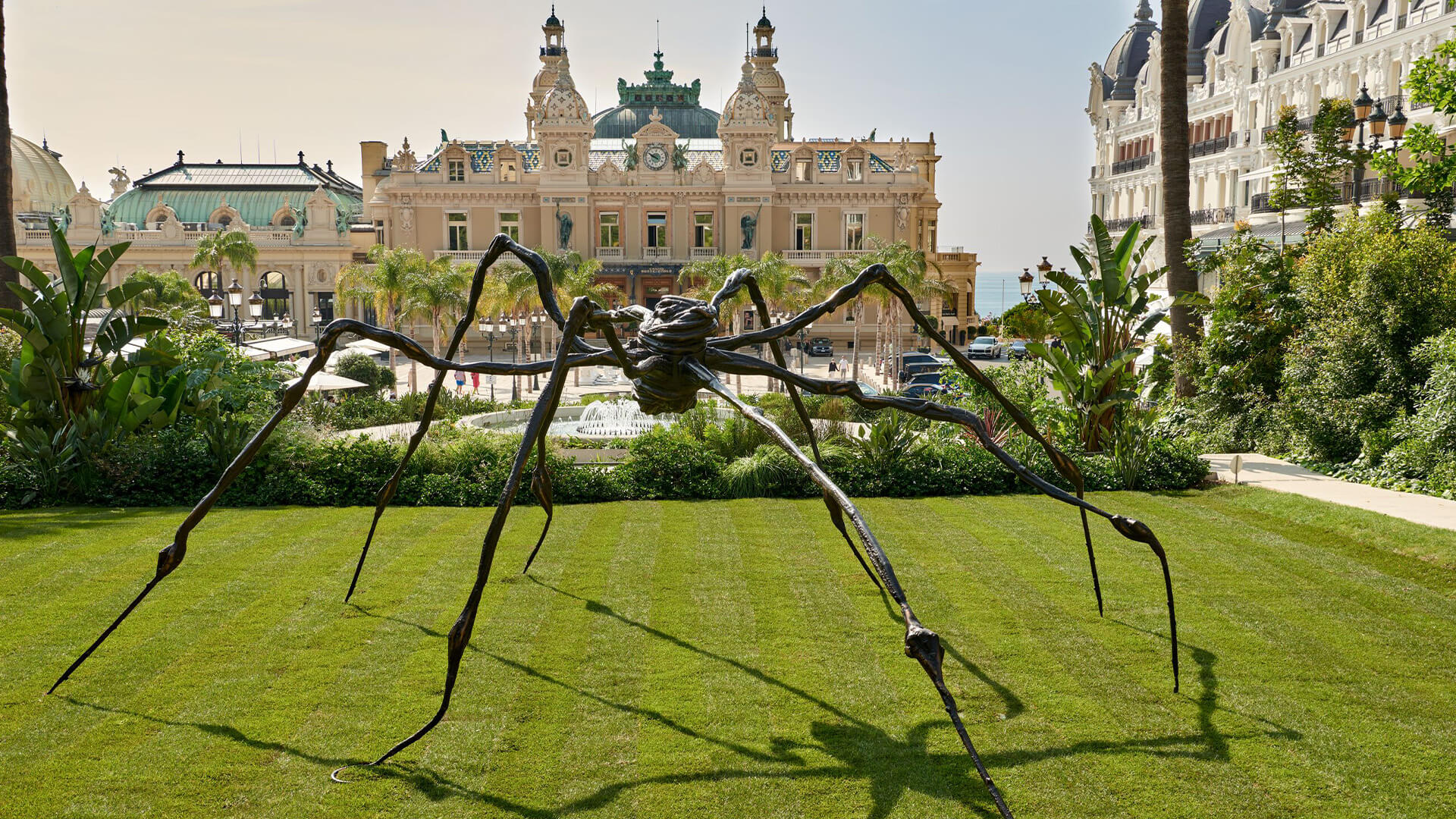
On view in Monaco
‘Bodily Abstractions / Fragmented Anatomies’ is on view now through 30 Apr 2022 at Hauser & Wirth Monaco.
About the Artists
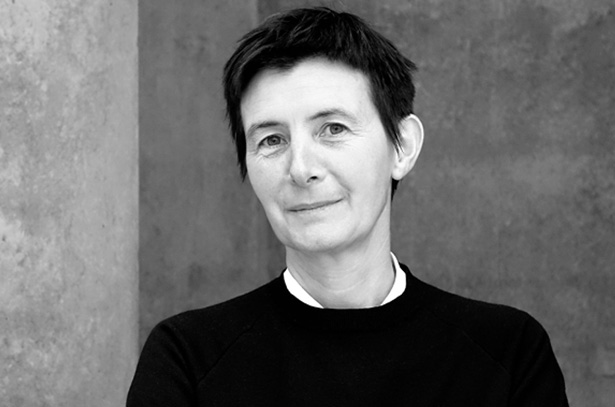
Berlinde De Bruyckere
Working with casts made of wax, animal skins, hair, textiles, metal and wood, Berlinde De Bruyckere renders haunting distortions of organic forms. The vulnerability and fragility of man, the suffering body—both human and animal—and the overwhelming power of nature are some of the core motifs of De Bruyckere’s oeuvre.
Born in Ghent, Belgium in 1964, where she currently lives and works, De Bruyckere is profoundly influenced by traditions of the Flemish Renaissance. Drawing from the legacies of the European Old Masters and Christian iconography, as well as mythology and cultural lore, De Bruyckere layers existing histories with new narratives suggested by current events to create a psychological terrain of pathos, tenderness and unease. The dualities of love and suffering, danger and protection, life and death and the human need for understanding are the universal themes De Bruyckere has been dealing with since the beginning of her career. ‘I want to show how helpless a body can be,’ De Bruyckere has said. ‘Which is nothing you have to be afraid of—it can be something beautiful.’

Lorna Simpson
Born in Brooklyn, Lorna Simpson came to prominence in the 1990s with her pioneering approach to conceptual photography. Simpson’s early work—particularly her striking juxtapositions of text and staged images—raised questions about the nature of representation, identity, gender, race and history that continue to drive the artist’s expanding and multi-disciplinary practice today. She deftly explores the medium’s umbilical relation to memory and history, both central themes within her work.
Studying on the West Coast in the mid-1980s, Simpson was part of a generation of artists who utilized conceptual approaches to undermine the credibility and apparent neutrality of language and images. Her most iconic works from this period depict African-American figures as seen only from behind or in fragments. Photographed in a neutral studio space, the figures are tied neither to a specific place nor time. Drawing upon a long-standing interest in poetry and literature, the artist accompanies these images with her own fragmented text, which is at times infused with the suggestion of violence or trauma. The incredibly powerful works entangle viewers into an equivocal web of meaning, with what is unseen and left unsaid as important as that which the artist does disclose. Seemingly straightforward, these works are in fact near-enigmas, as complex as the subject matter they take on.
Over the past 30 years, Simpson has continued to probe these questions while expanding her practice to encompass various media including film and video, painting, drawing and sculpture. Her recent works incorporate appropriated imagery from vintage Jet and Ebony magazines, found photo booth images, and discarded Associated Press photos of natural elements—particularly ice, a motif that appears in her sculptural work in the form of glistening ‘ice’ blocks made of glass. The new work continues to immerse viewers in layers of bewitching paradoxes, threading dichotomies of figuration and abstraction, past and present, destruction and creation, and male and female. Layered and multivalent, Simpson’s practice deploys metaphor, metonymy, and formal prowess to offer a potent response to American life today.

Anna Maria Maiolino
Anna Maria Maiolino is one of the most significant artists working in Brazil today. Born 1942 in Italy, Maiolino’s practice expresses a concern with creative and destructive processes. Working across a wide range of disciplines and mediums—spanning drawing, printmaking, poetry, film, performance, installation and sculpture—Maiolino relentlessly explores notions of subjectivity and self.
Through fragmentation and abstraction, Maiolino’s surfaces are rich with metaphor, alluding to and questioning language, sexuality, desire and the unconscious. The artist’s deeply formative migration from post-war Southern Italy to a politically unstable South America, and her linguistic passage from Italian to Portuguese, engendered an enduring fascination with identity. Maiolino has perfected a dialogue between opposite yet complementary categories in a practice that dissolves dichotomies of inner and outer, self and other. Hers is an art in search of a new language for the liminal realm of daily human existence.
Shadowed by the turmoil and governance of military repression, Maiolino’s early experiments in the 1960s connected her to important movements in Brazilian art history such as New Figuration and New Objectivity. Maiolino took part in the radical reconfiguring of the art object—and thus the art institution and the artist—during this period. Along with Lygia Pape, Lygia Clark, and Hélio Oiticica, Maiolino participated in the 1967 exhibition, ‘New Brazilian Objectivity,’ which symbolized a cultural shift in previous constructivist traditions and established a new vision for the production of art in Brazil.
Since the early 1980s Maiolino has worked with malleable materials that, through her handling, come to bear the imprint of unconscious gestures, daily rituals and sensory expressions of being. Her mark-making is based on the repetition of basic actions that are recorded in the material; her forms the result of this laborious processing of raw material, like the basic bodily functions of eating and defecating. Hers is a work of liberation: abstraction is freed from the more repressed and puritanical precepts of Minimalism and brought back into the service of the active, desiring body.

Alina Szapocznikow
Born in Poland to a Jewish family in 1926, Alina Szapocznikow survived internment in concentration camps during the Holocaust as a teenager. Immediately after the war, she moved first to Prague and then to Paris, studying sculpture at the École des Beaux Arts. In 1951, suffering from tuberculosis, she was forced to return to Poland, where she expanded her practice. When the Polish government loosened controls over creative freedom following Stalin’s death in 1952, Szapocznikow moved into figurative abstraction and then a pioneering form of representation. By the 1960s, she was radically re-conceptualizing sculpture as an intimate record not only of her memory, but also of her own body.
In 1962, Szapocznikow experienced a breakthrough when she began to cast her own body in plaster. Her first work with this approach, ‘Noga (Leg)’, 1962 depicts the artist’s right leg—a very public statement on the human corpus as vehicle of pleasure, liberation, illness, death, and decomposition. She spoke of this turn in her development: ‘Haunted by the increasingly academic nature of abstract art, and at the same time, partly out of my spirit of contradiction and partly perhaps out of some artistic exhibitionism, I made a cast of my own leg and an assemblage of casts of my face… Fortunately we believe that in art everything has been already, so nothing has been yet.’
Szapocznikow was diagnosed with breast cancer in 1969, a turn of events that shaped her later sculptural and photographic efforts. In a series of sculptures titled ‘Tumors,’ made of resin, gauze, crumpled newspapers, and photographs, the artist gave form to the anxiety and existential challenges of illness. Szapocznikow’s final works express her pointed desire to engage with something deeper and ineffable, physical and psychological, the symptoms of bodily experiences and the traces of what we leave behind. She wrote, ‘Despite everything, I persist in trying to fix in resin the traces of our body: I am convinced that of all the manifestations of the ephemeral, the human body is the most vulnerable, the only source of all joy, all suffering, and all truth.’

Eva Hesse
Born in Hamburg Germany in 1936, Eva Hesse is one of the icons of American art of the 1960s, her work being a major influence on subsequent generations of artists. Comprehensive solo exhibitions in the past 50 years, as well as a retrospective that toured from the San Francisco Museum of Modern Art to the Museum Wiesbaden in Germany and finally to the Tate Modern in London, have highlighted the lasting interest that her oeuvre has generated. Hesse cultivated mistakes and surprises, precariousness and enigma, to make works that could transcend literal associations. The objects she produced, at times barely present yet powerfully charismatic, came to play a central role in the transformation of contemporary art practice.
In New York in the 1960s, Hesse was one of a group of artists, including Robert Morris, Bruce Nauman, Richard Serra and Robert Smithson, who engaged with materials that were flexible, viscous or soft: latex rubber, plastic, lead, polythene, copper, felt, chicken-wire, dirt, sawdust, paper pulp and glue. Often unstable and subject to alteration, these elements yielded works that were vital in their relativity and mutability. Hesse was aware she produced objects that were ephemeral, but this problem was of less concern to her than the desire to exploit materials with a temporal dimension. Much of the life-affirming power of Hesse’s art derives from this confident embrace of moment. As she stated in an interview with Cindy Nemser for Artforum in 1970, 'Life doesn’t last; art doesn’t last.'
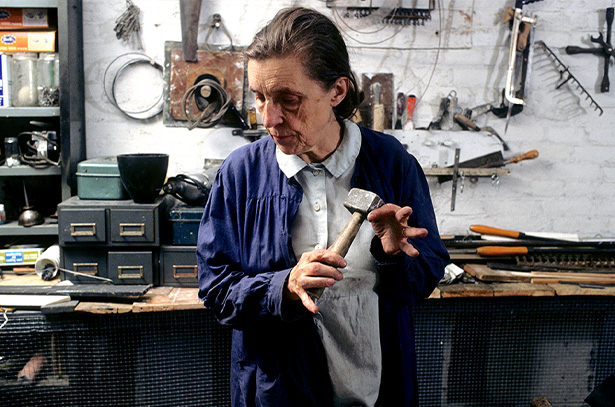
Louise Bourgeois
Born in France in 1911, and working in America from 1938 until her death in 2010, Louise Bourgeois is recognized as one of the most important and influential artists of our time. For over seven decades, Bourgeois’s creative process was fueled by an introspective reality, often rooted in cathartic re-visitations of early childhood trauma and frank examinations of female sexuality. Articulated by recurrent motifs (including body parts, houses and spiders), personal symbolism and psychological release, the conceptual and stylistic complexity of Bourgeois’s oeuvre—employing a variety of genres, media and materials—plays upon the powers of association, memory, fantasy, and fear.
Bourgeois’s work is inextricably entwined with her life and experiences: fathoming the depths of emotion and psychology across two- and three-dimensional planes of expression. ‘Art,’ as she once remarked in an interview, ‘is the experience, the re-experience of a trauma.’ Arising from distinct and highly individualized processes of conceptualization, Bourgeois's multiplicity of forms and materials enact a perpetual play: at once embedding and conjuring emotions, only to dispel and disperse their psychological grasp. Employing motifs, dramatic colors, dense skeins of thread, and vast variety of media, Bourgeois's distinctive symbolic code enmeshes the complexities of the human experience and individual introspection.
Rather than pursuing formalist concerns for their own sake, Bourgeois endeavored to find the most appropriate means of expressing her ideas and emotions, combining a wide range of materials—variously, fabric, plaster, latex, marble and bronze—with an endless repertoire of found objects. Although her oeuvre traverses the realms of painting, drawing, printmaking, and performance, Bourgeois remains best known for her work in sculpture.
Bourgeois’s early works include her distinct 'Personages' from the late 1940s and early 1950s; a series of free-standing sculptures which reference the human figure and various urban structures, including skyscrapers. The ‘Personages’ served as physical surrogates for the friends and family Bourgeois had left behind in France, while also highlighting an interest in architecture dating back to her childhood. Her installation of these sculptures as clustered ‘environments’ in 1949 and 1950 foreshadowed the immersive encounters of installation art twenty years before the genre’s rise to prominence.
Bourgeois’s work was included in the seminal exhibition ‘Eccentric Abstraction,’ curated by Lucy Lippard for New York's Fischbach Gallery in 1966. Major breakthroughs on the international scene followed with The Museum of Modern Art in New York's 1982 retrospective of her work; Bourgeois's participation in Documenta IX in 1992; and her representation of the United States at the 45th Venice Biennale in 1993.
In 2001, Bourgeois was the first artist commissioned to fill the Tate Modern’s cavernous Turbine Hall. The Tate Modern’s 2007 retrospective of her works, which subsequently traveled to the Centre Pompidou in Paris; The Guggenheim Museum in New York; The Museum of Contemporary Art in Los Angeles; and The Hirshhorn Museum & Sculpture Garden in Washington D.C., cemented her legacy as a foremost grande dame of late Modernism.
Header image: Louise Bourgeois, ARCHED FIGURE, 1993 © The Easton Foundation/VAGA, NY, Photo: Christopher Burke
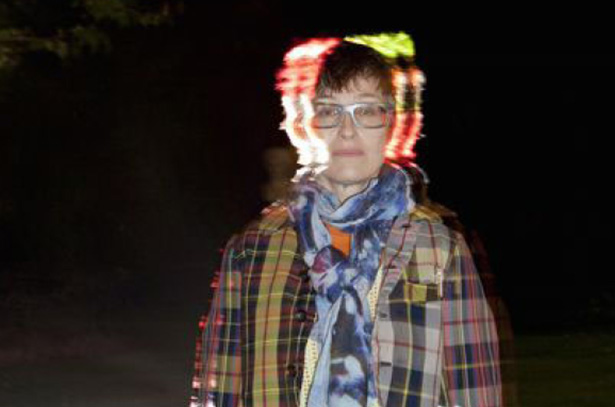
Pipilotti Rist
Pipilotti Rist, a pioneer of spatial video art, was born 1962 in Grabs in the Swiss Rhine Valley on the Austrian Border and has been a central figure within the international art scene since the mid-1980s.
Astounding the art world with the energetic exorcistic statement of her now famous single channel videos, such as ‘I’m Not The Girl Who Misses Much,’ 1986 and ‘Pickelporno,’ 1992, her artistic work has co-developed with technical advancements and in playful exploration of its new possibilities to propose footage resembling a collective brain. Through large video projections and digital manipulation, she has developed immersive installations that draw life from slow caressing showers of vivid color tones, like her works ‘Sip My Ocean,’ 1996 or ‘Worry Will Vanish,’ 2014.
For Rist, showing vulnerability is a sign of strength on which she draws for inspiration. With her curious and lavish recordings of nature (to which humans belong as an animal), and her investigative editing, Rist seeks to justify the privileged position we are born with, simply by being human. Her installations and exhibition concepts are expansive, finding within the mind, senses and body the possibility for endless discovery and poetical invention. ‘Pixel Forest,’ 2016, made from 3,000 thousand LEDs hung on strings, resembles a movie screen that has exploded into the room, allowing viewers an immersive walk through 3-dimensional video. As she herself puts it, ‘beside the energy-intensive exploration of the geographical world, pictures, films and sounds have been and are the spaces into which we can escape... The projector is the flamethrower, the space is the vortex and you are the pearl within.’
Since 1984, Rist has had countless solo and group exhibitions, and video screenings worldwide. Her recent solo exhibitions are 'Electric Idyll' at the Fire Station Doha (2024), 'Prickling Goosebumps & A Humming Horizon' at Hauser & Wirth New York and Luhring Augustine Chelsea (2023-24), 'Behind Your Eyelid' at Tai Kwun Hong Kong (2022), ‘Big Heartedness, Be My Neighbor’ at The Geffen Contemporary, MOCA, Museum of Contemporary Art Los Angeles (2021 – 2022), ‘Your Eye Is My Island’ at MoMAK, The National Museum of Modern Art Kyoto and ART TOWER MITO (2021). ‘Åbn min Lysning. Open my Glade’ at Louisiana Museum of Modern Art Humlebæk Denmark (2019), ‘Sip My Ocean’ at the Museum of Contemporary Art Sydney (2017 – 2018), ‘Pixel Forest’ at New Museum New York (2016 – 2017) and ‘Your Saliva is My Diving Suit of the Ocean of Pain’ at Kunsthaus Zürich (2016), all resulted in record-breaking attendance numbers for each institution. A major exhibition is planned for summer 2025 at UCCA Beijing.
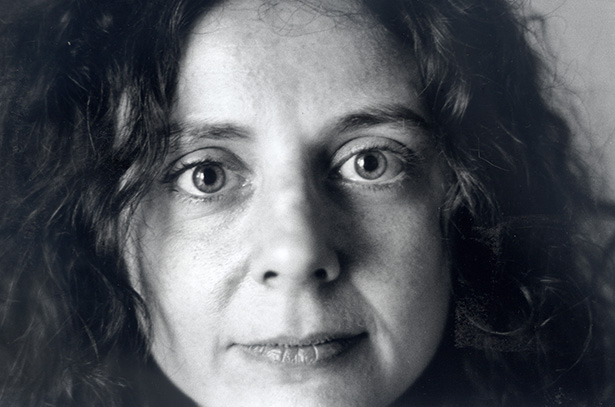
Lee Lozano
Lee Lozano’s paintings are admired for their energy, daring physicality and tirelessness in investigating the body and issues of gender. Although lauded by Lucy Lippard in 1995 as the foremost female conceptual artist of her time, Lozano had disengaged herself from the New York art world completely by the early 1970s. She left behind a body of work of striking formal breadth and complexity. Lozano fought to consolidate her artistic self in a realm void of systems, rules, and group consciousness. She pursued a wholly independent solo studio practice, which culminated in her rejection of the New York art world and a boycott of women. She first refused to attend public art world functions and withdrew from exhibitions, finally relocating to Dallas, Texas. ‘By refusing to speak to women,’ says Helen Molesworth, Chief Curator of LA MOCA, ‘she exposed the systematic and ruthless division of the world into categories of men and women. By refusing to speak to women as an artwork, she also refused the demand of capitalism for the constant production of private property… The strategy of rejection is a powerful one.’
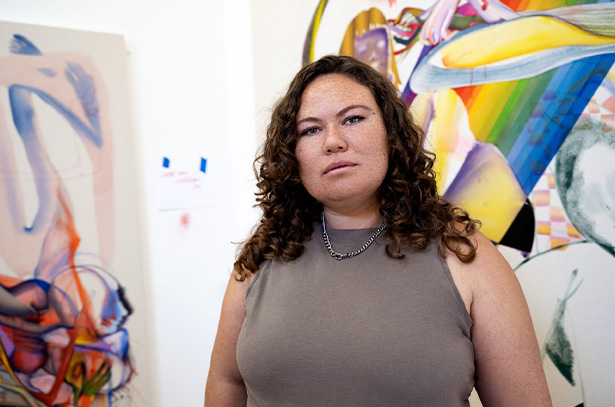
Christina Quarles
Christina Quarles (b. 1985) is a Los Angeles-based artist, whose practice works to dismantle and question assumptions and ingrained beliefs surrounding identity and the human figure. Born in Chicago and raised by her mother in Los Angeles, Quarles took art classes from an early age. She developed a solid foundation for a lifelong drawing practice through after-school programs and figure drawing classes at the Los Angeles County High School for the Arts.
In 2007, Quarles graduated from Hampshire College with dual BA degrees in Philosophy and Studio Art, then trained and worked in the field of graphic design. As her immersion in drawing progressed, she became well versed in and heavily influenced by the imagery and painterly processes of art historical masters David Hockney and Philip Guston, among others. Seeking a vehicle for expressing feelings and experiences language alone cannot capture, Quarles went on to attend Yale University, where she received her MFA in 2016. She studied at the Skowhegan School of Painting and Sculpture that same year.
Even in her earliest works, Quarles honed in on the bodily experience as her subject, beginning an artistic engagement with the contradictions inherent in one’s own complex, nuanced identity. At Yale, she worked on paper with gestural line making, later translating these forms onto large canvases that allowed her to make broader compositions. These early canvases regularly included written phrases, puns, and patterns that played with ambiguity and manipulated space, simultaneously anchoring and displacing figures. A defined plane with flowers could be a field or blanket, a sky-blue gradient could represent natural light or the flat surface of a desktop computer, as in ‘Let Us In Too (Tha Light)’ (2018).
In her current work, Quarles has moved text from the paintings themselves and into her titles, further winnowing out a predetermined visual narrative. These titles are inspired by overheard phrases, such as in the installation ‘Forced Perspective (And I Kno It’s Rigged, But It’s tha Only Game in Town)’ (2018), a highlight of the Hammer Museum’s ‘Made in L.A.’ exhibition. In that large-scale work, Quarles combined trompe l’oeil floral wallpaper and raw canvas with inscribed poetry and song lyric quotes, to suggest the illusory boundaries that define the self and our often limited interpretations of it.
As her practice has developed, Quarles has engaged in more overtly political subject matter. In 2018, she began work on ‘Casually Cruel’ (2018), heavily influenced by the situation at the US/Mexican border where families were subject to brutal separation. In this painting, two figures are enclosed by a blue plane covered with swirling green lines in a scene sandwiched between stretches of raw canvas. A third figure appears in the blue and green plane, its legs and limbs both trapped and separated from the others.
In terms of technique, Quarles’ avid experimentation and focus on transfiguring the material terrain of the canvas, connects her with such predecessors as late American artist Jack Whitten. Approaching the canvas with no predetermined composition, Quarles begins making marks that evolve into line drawings of human forms and body parts. She then photographs the work and uses Adobe Illustrator to draw the backgrounds and structures that ultimately surround the figures. In a reversal of the typical layering of a composition, Quarles’ figures precede and even dictate the environment that they come to inhabit. Once the composition is created digitally, she paints it onto the canvas, using stencils created by hand or by a vinyl plotter as a guide. Intersecting color, texture, and layers, the resulting works are more akin to relief sculpture than conventional painting—a material outcome that further underscores Quarles’ themes of embodiment and experience for both the artist and the viewer.
Quarles has been the recipient of several awards and grants. She was the inaugural recipient of the 2019 Pérez Art Museum Miami Prize, in 2017 she received the Rema Hort Mann Foundation Emerging Artist Grant, and in 2015 she received the Robert Schoelkopf Fellowship at Yale University. In addition, she participated in the Fountainhead Residency in 2017.
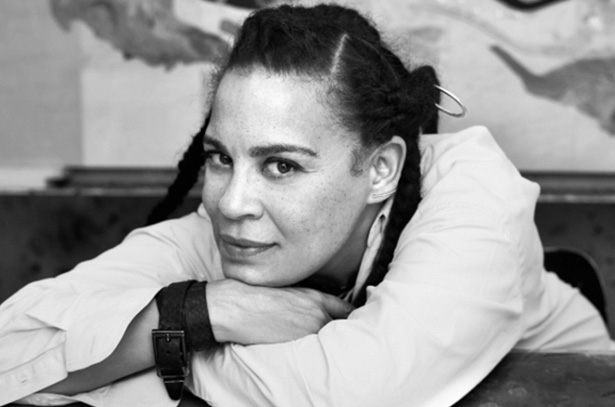
Ellen Gallagher
Born in Providence, Rhode Island, Ellen Gallagher lives and works between Rotterdam, Netherlands and New York. Gallagher builds multi-layered paintings that pivot between the natural world, mythology and history. Her painting process involves undoing and reforming trains of thought often over long periods of time and across linked bodies of works. Over a highly multifaceted career, Gallagher’s work has been united by what she calls a ‘jitter,’ an intellectual approach in which aesthetic possibilities are shook loose from seismic cracks beneath the surface of cultural entities normally thought to be unshakable and impermeable. Encompassing painting, drawing, collage and celluloid based projections that fuse technique and material into syncretic form, her arresting compositions are a process of recovery and reconstitution through the accumulation and erasure of media, which results in palimpsestic and topographic surfaces.
The subtle textures of her paintings bear witness to a singular process that is materially and conceptually intertwined. Gallagher creates a geographic timeline in which interlocking forms appear to mutate between figuration and abstraction, like agents in a musical composition coming together in an evolving continuum. Gallagher’s work is included in many major international museum collections including MoMA, New York; Albright Knox Art Gallery, Buffalo; The Metropolitan Museum of Art, New York; The Art Institute of Chicago; MCA Chicago; MOCA, Los Angeles; Philadelphia Museum of Art; Whitney Museum of Art, New York; Tate, London; and Centre Pompidou, Paris.
Inquire about available works
‘Bodily Abstractions / Fragmented Anatomies’ is on view now through 30 Apr 2022 at Hauser & Wirth Monaco.
Current Exhibitions
1 / 12
